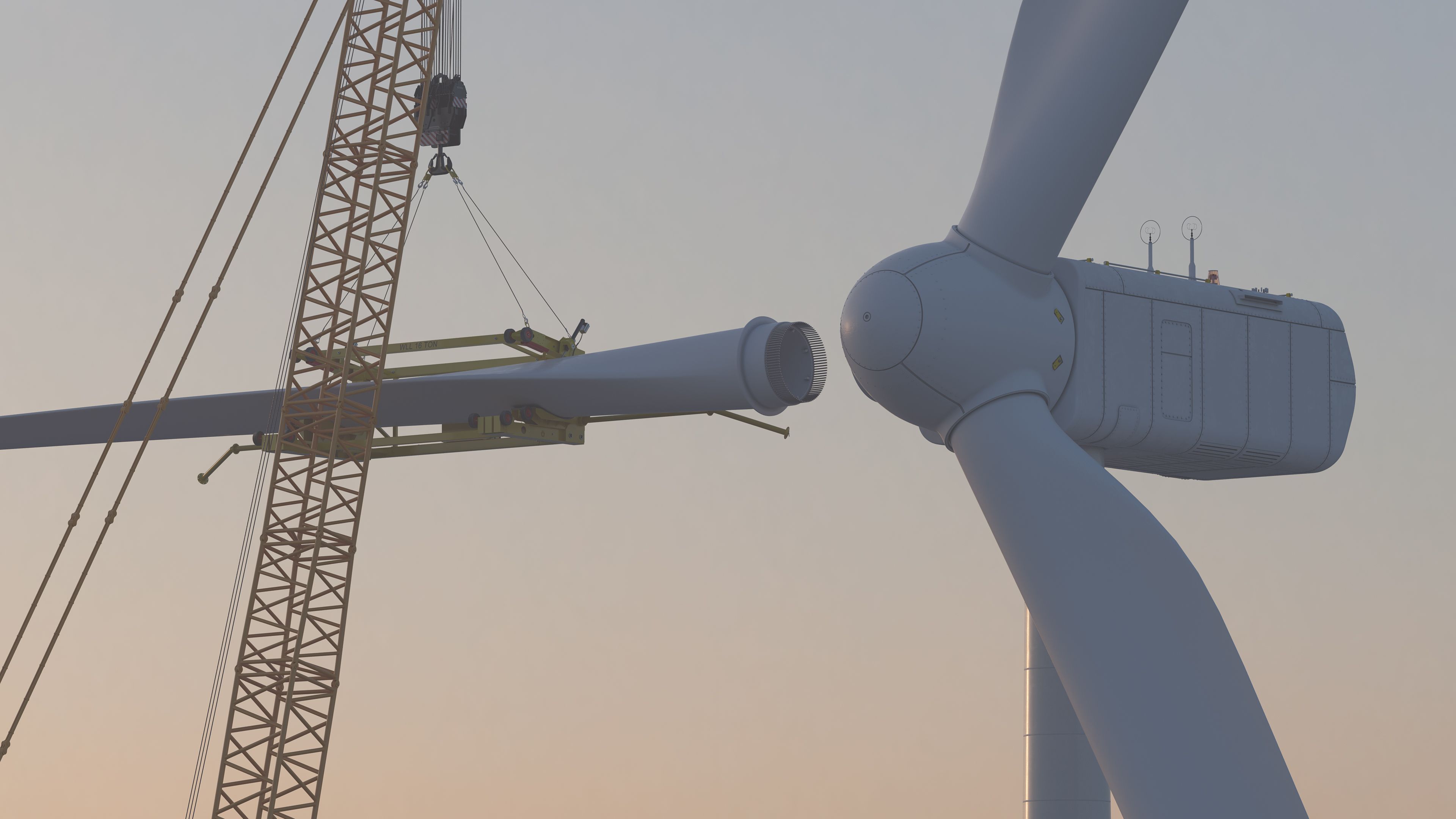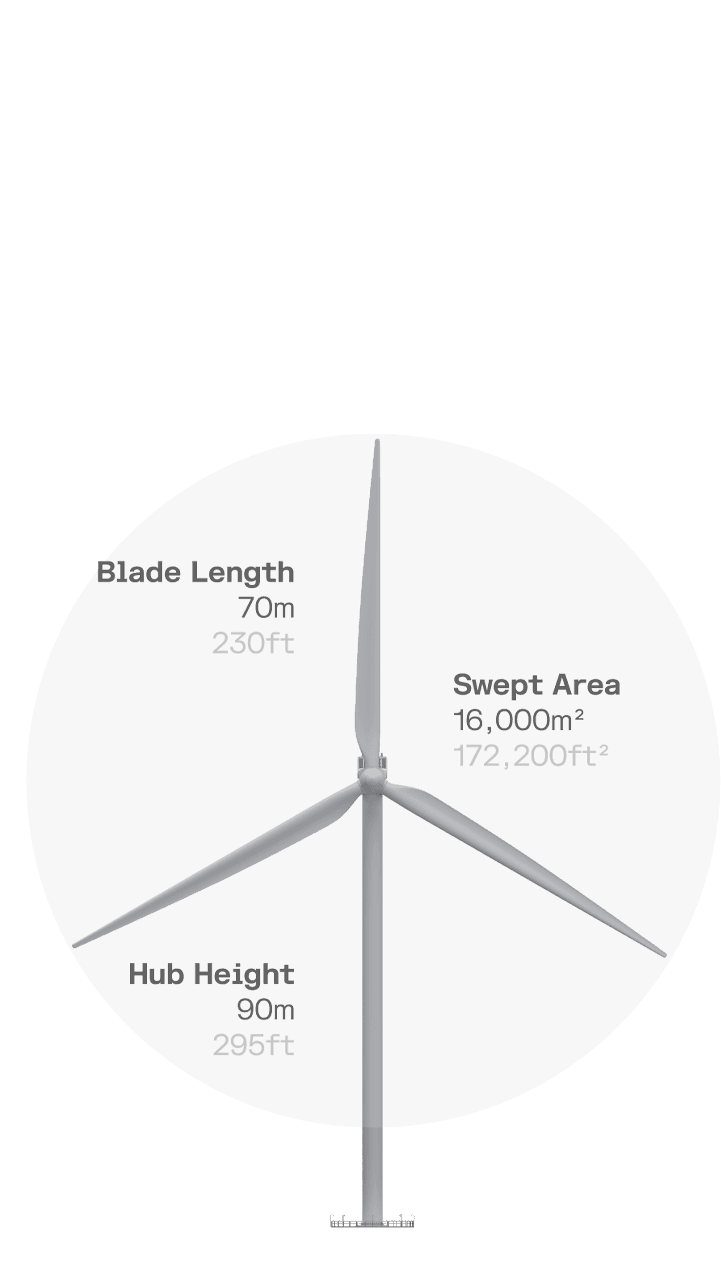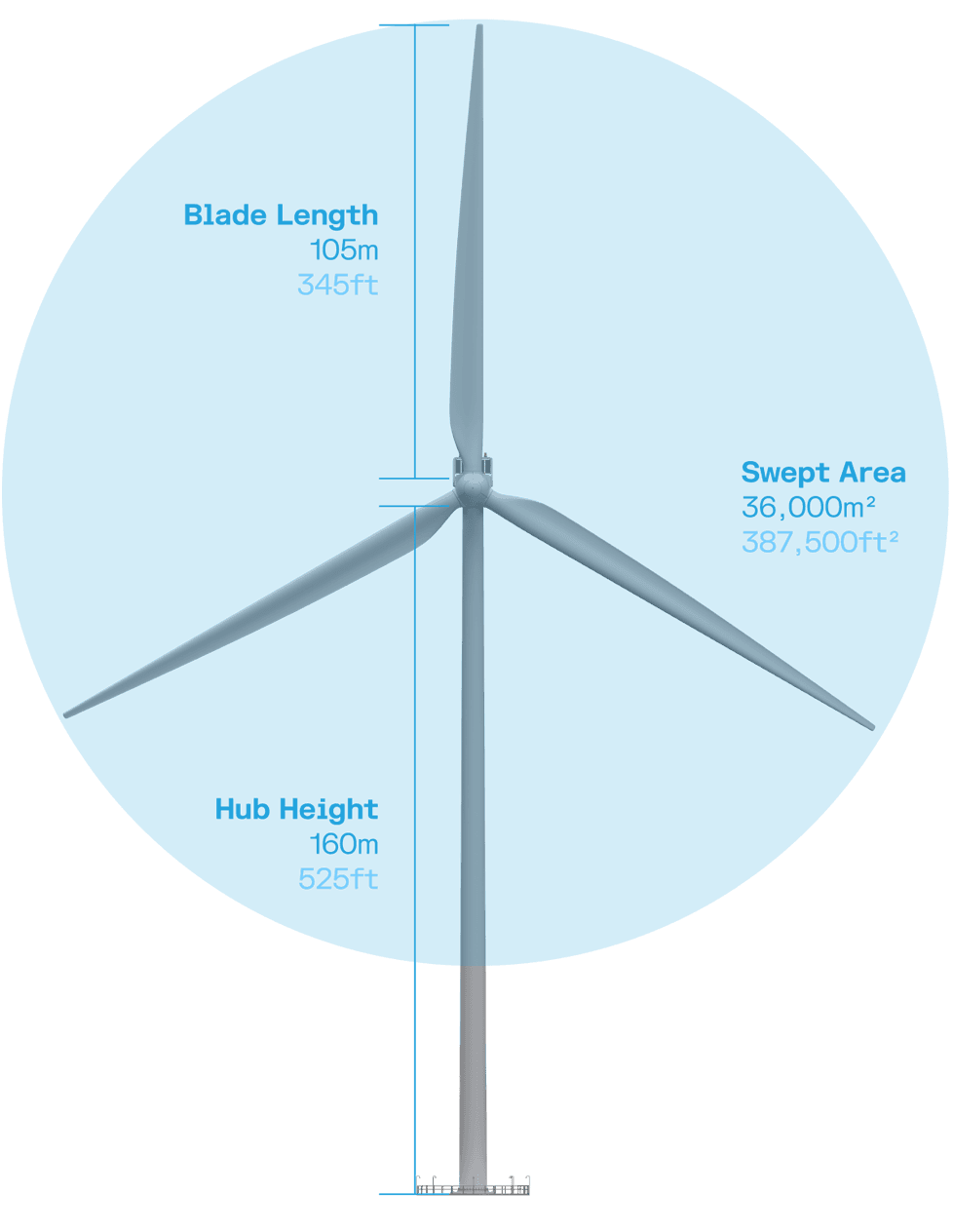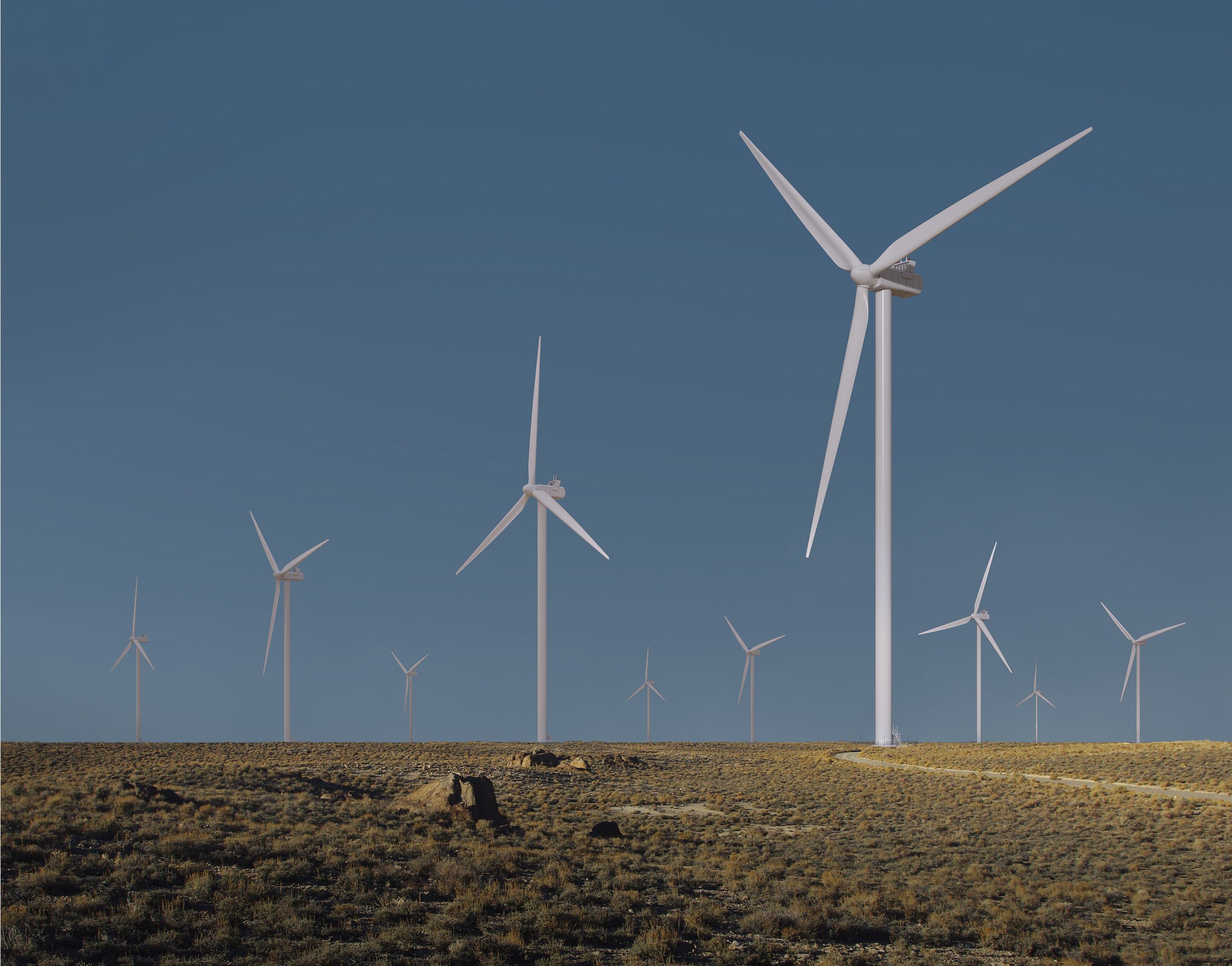
Why Wind
The world increasingly demands 24/7/365 clean energy.
Wind energy can meet this need for consistent low-cost clean energy. It achieves this because it combines a relatively high capacity factor with low cost power. This makes it great for traditional grid as well as non-grid applications such as data centers, and for the production of green molecules such as green hydrogen, green ammonia and sustainable aviation fuel. It will play a major role in all these applications.
As much as $10 trillion will be spent on onshore wind through 2050*, making GigaWind the largest energy transition opportunity in the world.
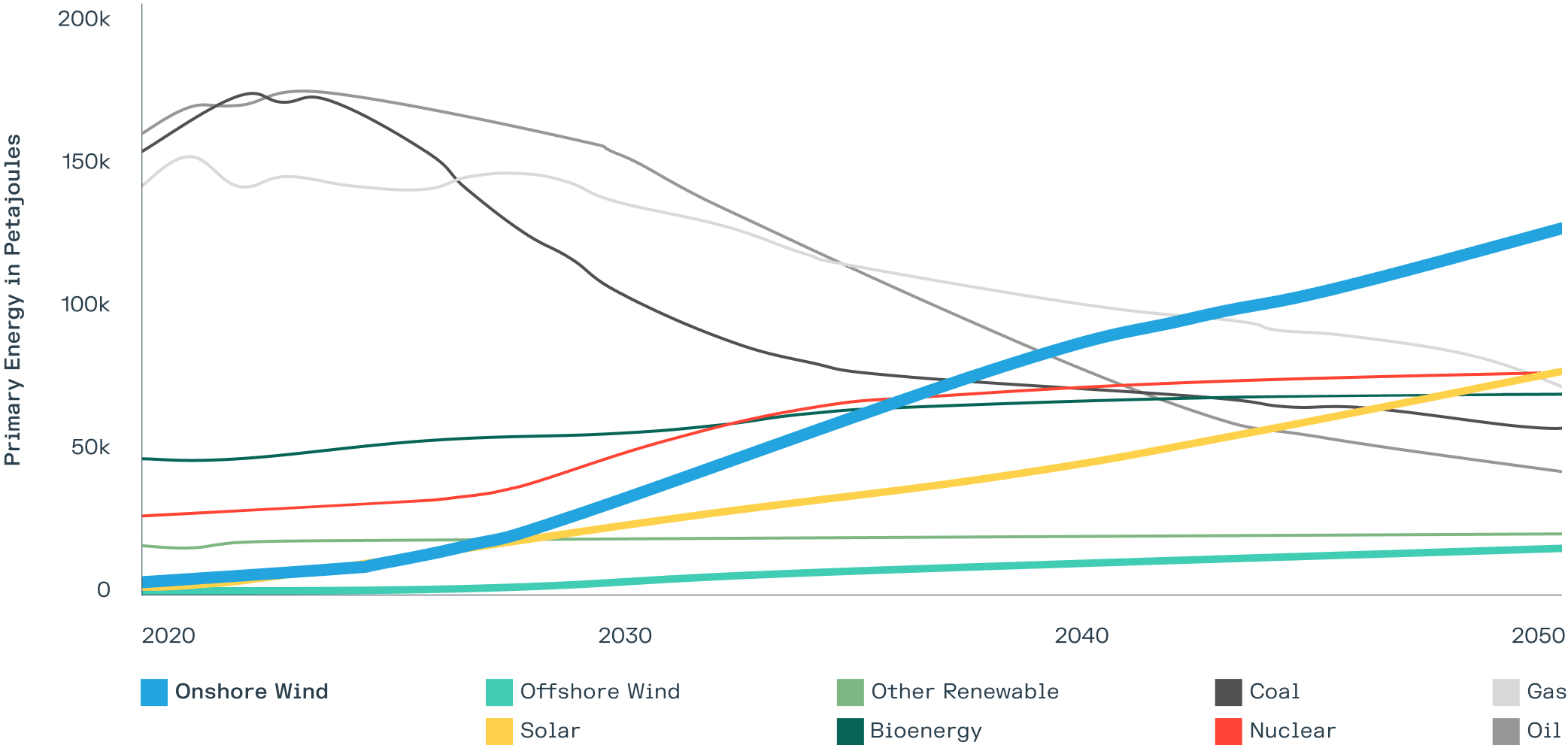
Onshore wind is more practical than offshore wind – easier to build and maintain. GigaWind brings the scale advantages and economies of large offshore wind turbines to the onshore environment.


Lower cost wind power
Most consistent renewable energy
The GigaWind Advantage
GigaWind – the largest, most powerful turbines ever deployed onshore – creates unprecedented economies of scale, delivering lower cost clean energy and expanding the addressable market for wind power.
Longer blades mean GigaWind provides a step function improvement in cost and output steadiness compared to today’s wind turbines
New Geographies for Wind Energy
GigaWind performs better in nearly all environments, making wind energy economical in many more places


Wind and solar are even better together
GigaWind performs best in the winter, while solar energy performs best in the summer
GigaWind generates the most power at dawn and dusk, while solar energy generates the most power in the afternoon
GigaWind complemented with solar energy often produces the best combination of cost and capacity factor
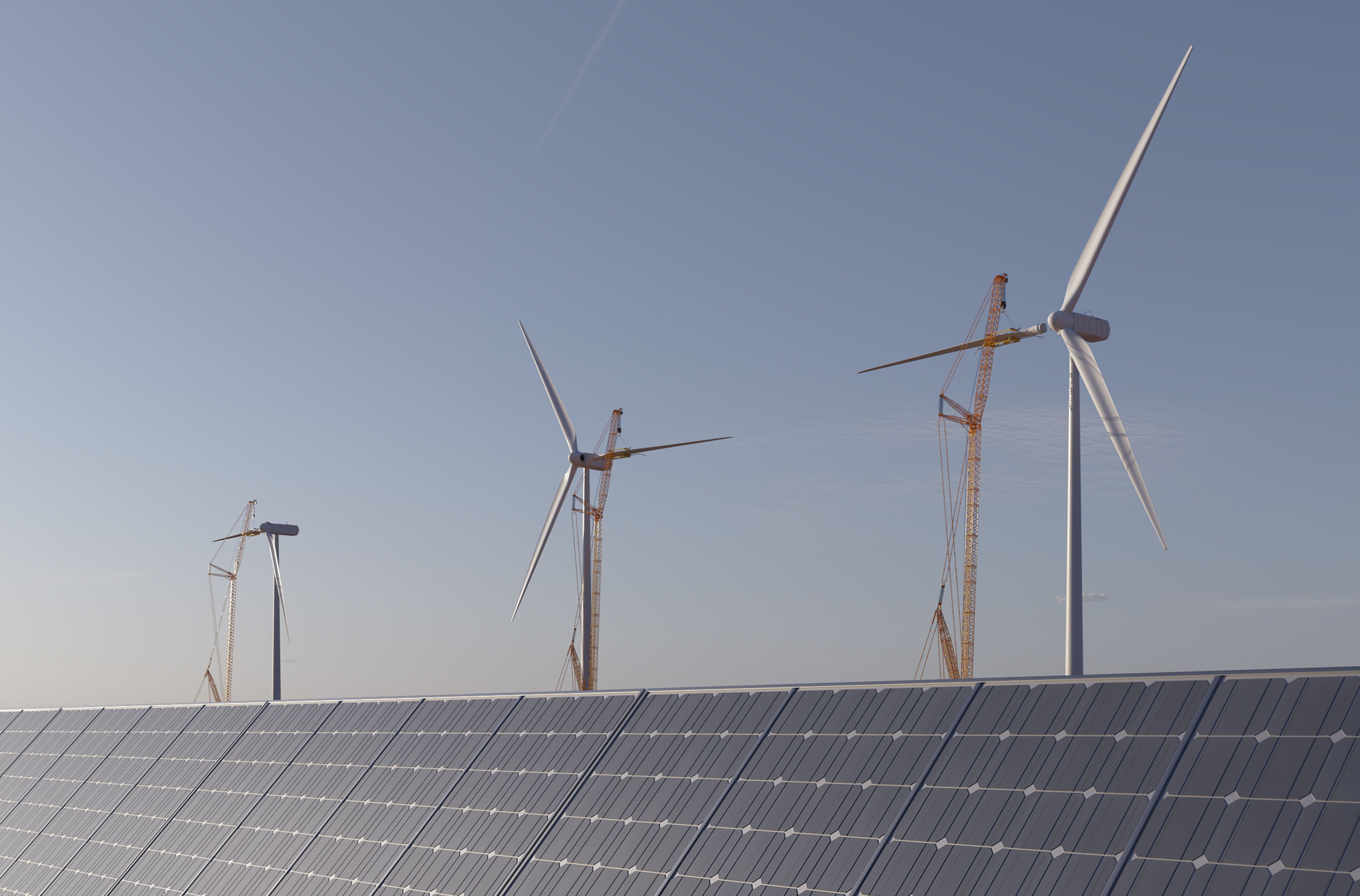
GigaWind and the Hydrogen Economy
GigaWind's low cost and high capacity factor are both needed to create the lowest cost green hydrogen
In addition to green electricity, achieving climate goals will require emission-free molecules to address hard to decarbonize sectors. The most important of these is hydrogen, which if produced sustainably can serve as the energy source and chemical feedstock used to create many other kinds of fuels. Examples include ammonia and sustainable aviation fuel (SAF). Today, hydrogen is derived primarily from fossil fuels but green hydrogen will be produced via electrolysis. Electrolysis uses only water and electricity as its inputs, meaning that as long as the electricity is renewable, the hydrogen is free of emissions.
Making green hydrogen requires two things to be cost-effective: low-cost energy and high capacity factor. As shown in the chart at right, solar can give you the first (the Y-axis, or low cost), offshore wind the latter (the X-axis, or high capacity factor), but only GigaWind can give you both. GigaWind will produce the world's cheapest green hydrogen both for existing uses, such as fertilizer, and for new opportunities, such as steelmaking.
